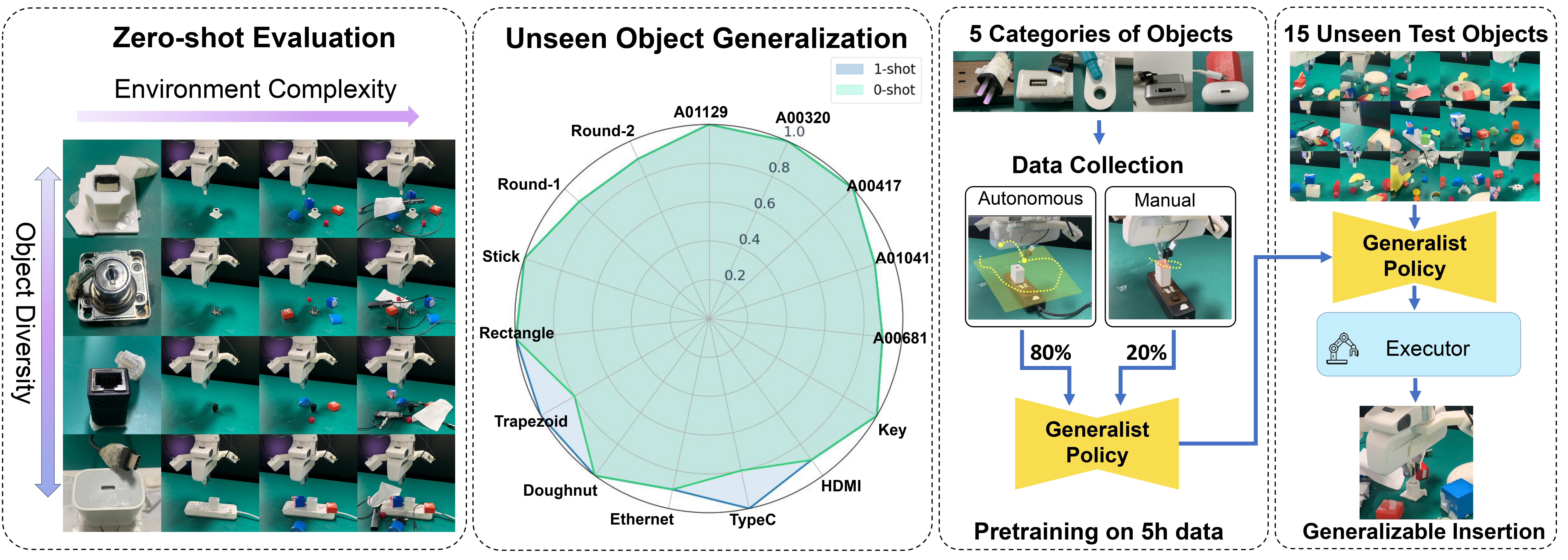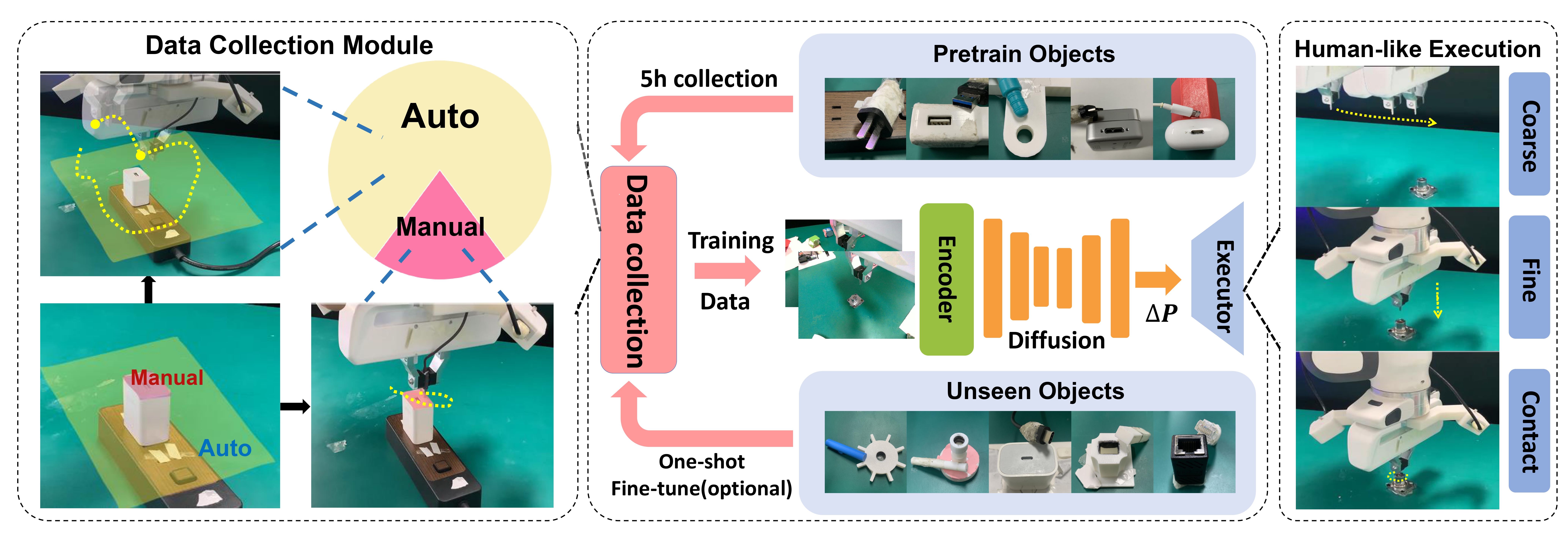Overview

We propose EasyInsert, a framework which leverages the human intuition that relative pose (delta pose) between plug and socket is sufficient for successful insertion, and employs efficient and automated real-world data collection with minimal human labor to train a generalizable model for relative pose prediction. During execution, EasyInsert follows a coarse-to-fine execution procedure based on predicted delta pose, and successfully performs various insertion tasks. EasyInsert demonstrates strong zero-shot generalization capability for unseen objects in cluttered environments, handling cases with significant initial pose deviations while maintaining high sample efficiency and requiring little human effort. In real-world experiments, with just 5 hours of training data, EasyInsert achieves over 90% success in zero-shot insertion for 13 out of 15 unseen novel objects, including challenging objects like Type-C cables, HDMI cables, and Ethernet cables. Furthermore, with only one human demonstration and 4 minutes of automatically collected data for fine-tuning, it reaches over 90% success rate for all 15 objects.

